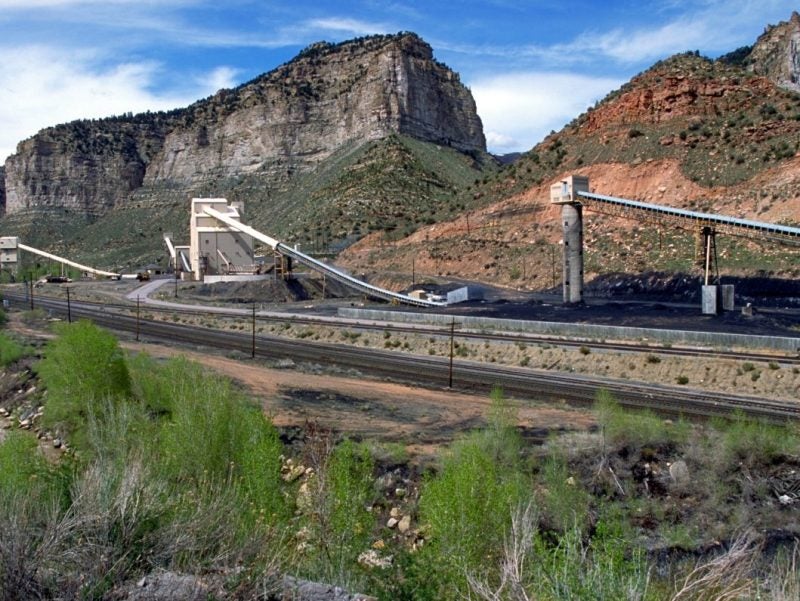
Mining safety in the US has improved dramatically over the last century.
In 1931, the earliest year the Mine Safety and Health Administration (MSHA) recorded figures for both numbers of miners and workplace deaths, a total of 1,688 employees died from a working population of 748,712.
The ratio of worker fatalities to the total number of miners was 0.00225, it is a figure that remains orders of magnitude greater than the 0.00008 ratio recorded in 2018, when 27 miners died from a workforce of 331,389.
Improvements in safety procedures and regulation, technological developments, and the steady decline of the US coal industry and shrinking of its workforce have all contributed to a decline in operational fatalities that culminated in 2016, when 25 US miners died at work. However, with over 400 fatalities in the period between 2008 and 2018, and consistently high fatalities relating to particular machines, such as powered haulage devices, work remains to be done.
Long-term and short-term improvements to US mine safety
2018 saw fewer deaths in coal operations than 2017, with fatalities falling marginally from 15 to 12. The MSHA divides accidents into 19 categories based on the machinery, equipment and circumstances that lead to the deaths or injuries, and the administration reported one death each in relation to the fall of material, the fall of roof and the slipping of persons in 2017.
There were no deaths in these categories in 2018, and powered haulage, the category responsible for the most deaths in six of the last 11 years in coal mines, saw two fewer deaths in 2018 than 2017.
Developments in technology, particularly tracking devices which can monitor the relative positions of workers and hazardous equipment, are a key reason for this improvement, as workers can be automatically warned about and prevented from entering dangerous areas. Further improvements in communication, enabling workers to communicate wirelessly with surface operators while underground, have also contributed to this trend, as safety officials can be involved in monitoring workers’ positions and safety, reducing the pressure on individual miners to account for their wellbeing at all times.

This graph shows improvements in protecting against powered haulage accidents and the fall of material, and how incidents not reported in 2017 appeared in 2018. Figures from the MSHA.
However, the fall of face killed two people in each year, and 2018 saw deaths in relation to electrical faults and fires after none the previous year. Similarly, metal/non-metal (MNM) deaths increased by one over the two years, with a stabilisation in powered haulage deaths (eight in both years) offset by deaths in exploding vessels, ignition of gas or dust and non-powered haulage not seen in 2017.
MNM operations in 2018 also saw the only death considered “other” by the MSHA in the last two years. A worker was killed in Grant County, New Mexico, when losing control of the vehicle he was driving, causing it to climb an embankment and overturn. The MSHA considers the fact that the worker was not wearing a seatbelt as crucial in differentiating the accident from the other categories, which generally imply an operational failure.
Despite these setbacks, the decade between 2008 and 2018 was largely positive for both coal and MNM operations, with fatalities falling from 30 to 12 and 23 to 15 respectively over the period. Accidents involving powered haulage and machinery remain an issue, responsible for 126 and 83 deaths over the period respectively, totalling almost half of the 431 deaths reported over the decade. However, fatalities relating to both types of equipment fell over the ten years, from 15 powered haulage deaths and 13 machinery deaths in 2008 to 13 and just 4 in 2008.

This graph shows how powered haulage (29%) and machinery (19%) were responsible for a significant proportion of mining deaths. Figures from the MSHA.
US mine accidents and fatalities by state
Comparing coal and MNM fatalities by state, the number of deaths at MNM operations ranged from zero to 20, while deaths at coal projects reached 89, demonstrating a much wider range of data in the coal sector. MNM deaths were mostly concentrated in Nevada and Texas, which saw 20 and 19 fatalities respectively, and accounted for almost one-fifth of the 212 MNM deaths between 2008 and 2018.

This graph compares coal and MNM fatalities by state over the decade, with coal measured in orange bars against the left axis, and MNM measured in a blue line against the right axis. Figures from the MSHA, and includes Puerto Rico (PR).
West Virginia and Kentucky, however, saw a much higher concentration of deaths in the coal sector, with 89 and 43 fatal accidents respectively. These states’ large coal mining populations are a key contributor to this statistic. The National Mining Association (NMA) reported that in 2017, 13,222 people were employed in coal mining alone in West Virginia, and a further 6,597 in Kentucky, making them the two states with the largest number of coal miners. Miners in these two states accounted for 37% of the US coal mining population of 53,051 in 2017.
However, West Virginia and Kentucky accounted for two-thirds of all coal fatalities between 2008 and 2018, around double what could be expected considering their proportion of the US coal mining population. The NMA named them as the highest and fifth-highest producers of coal in 2018, generating 95m and 39m short tonnes respectively, and the demand to produce large quantities of coal on a consistent basis could have encouraged mines to prioritise output over complete safety compliance.
Fatalities at the 2010 Upper Big Branch disaster
The figures for West Virginia are skewed, however, by a single incident: the Upper Big Branch disaster in 2010. An explosion at the Massey Energy-owned mine killed 29 and injured the remaining two workers at the project, and is the worst accident in US mining history since 1970. An extensive investigation into the disaster by the MSHA found the mine’s owners largely responsible for the accident and levied penalties of $10.8m at Massey for a number of errors.
“29 miners were killed in a coal dust explosion started by a methane ignition due to: practices and procedures that encouraged noncompliance; lack of proper examinations; lack of equipment maintenance; failure to follow approved ventilation and roof control plans; and failure to clean up accumulations and rock dust adequately,” said the MSHA in its final report.

This graph shows all coal fatalities by year and type of accident, with the Upper Big Branch disaster making a significant contribution to the 2010 totals. Figures from the MSHA.
While the disaster was an exceptional event, it does not account for other poor safety performances in 2010, including an increase in the number of powered haulage-related deaths at coal and MNM operations, and an overall increase in fatalities from the previous year; discounting the Upper Big Branch fatalities, deaths from 2009 to 2010 increased from 36 to 43.
Furthermore, 2014 saw the third-highest number of fatalities across the period, and was the third consecutive year to see increases in the number of occupational deaths. While there were no significant accidents on the scale of the Upper Big Branch disaster, among the 46 deaths were five incidents tangentially related to the mining industry, that were later judged to have been influenced by mining.
These five deaths included workers falling from heights, accidentally burning themselves and complications arising from asthma and dust inhalation, and together with the Upper Big Branch disaster are reminders of the importance of effective training and regulatory compliance to minimise the risks of these exceptional and unexpected events.
Metal Non-Metal mining fatalities by year 2008 to 2018

This graph shows all MNM fatalities by year and type of accident, with a significant reduction in fatalities since 2014. Figures from the MSHA.



